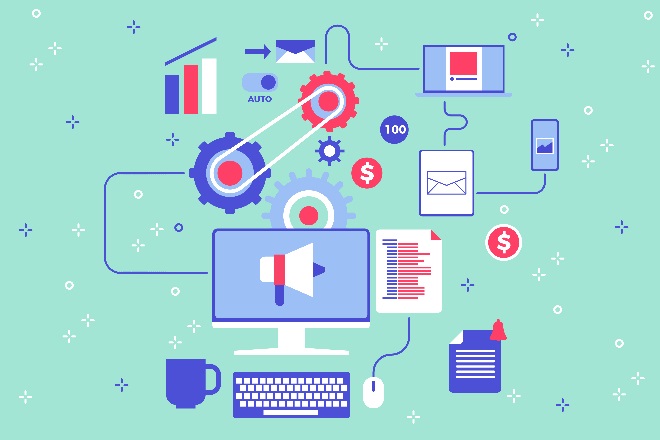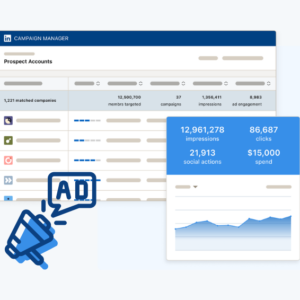Back in 2017, Google announced the flutter at the Google I/O developer conference. It was released under alpha preview after which it has gone through various iterations. In December 2018, Flutter 1.0 was released which was the first stable framework. Since then it has been utilized by a lot of big tech companies to develop applications.
What is Flutter?
One of the widely used multi-platform mobile application development frameworks developed by Google is Flutter. Developers may use this framework to create swift and visually appealing applications for Android, iOS, and desktops with one single codebase. It makes use of the reactive programming principles, which aid developers in managing and creating complex user interfaces (UIs).
How does Flutter work?
Under the hood, Flutter utilizes Dart, an object-oriented and modern programming language to build reactive and high-performing applications. The complete architecture of Flutter has a foundation on the widgets, the reusable UI elements that can be easily customized and blended with the other widgets to design amazing UI. There is also a wide range of pre-built widgets that developers can leverage to make buttons, images, and text fields like common UI elements, and more complex UIs like transitions and Animations.
Since Flutter follows the reactive programming model, the UI changes are visible in real-time to the developers making it easy for them to easily manage UI without any major code changes. Also, it utilizes the fast development cycle that allows the developer to change their code. This makes it quite easy for the developers to iterate and create high-quality applications in less time.
Top Benefits of Flutter
Recently Flutter has gained a lot of attraction in the mobile application development industry as it offers several benefits to developers. In this section, you will find some of the key benefits of Flutter.
- Firebase integration
Using Firebase with your Flutter application can be quite useful as it can help you to add features like cloud storage, authentication, real-time data access, and a lot more, making the application quite powerful. This also eliminates the need to write backend code and you can save a lot of time.
- Efficient performance and speed
As compared with other mobile application frameworks, Flutter has got exceptional speed and performance. Its widget-based architecture and reactive programming model help developers to build applications in no time as it enables the fast rendering of UI components, making the overall performance smooth with fast load times.
- Large community support
It has got one of the largest and constantly growing developers communities that are always ready to provide guidance, support, and resources. This community actively contributes to the framework’s development to ensure that it remains relevant and future-proof.
- Top-notch UI design
As we discussed previously, there is a whole UI widget kit that developers may use to create aesthetically pleasing and responsive UI designs. Developers don’t need to use any external tools or libraries to create UI design.
- Fast development process
A lot of time can be saved by using Flutter for application development. There is a complete in-built UI widget kit that requires no effort by the developers to design anything from scratch. This is quite the best feature of flutter for developers who want to create prototypes.
- Cross platform development
Developers can create both mobile and web applications with Flutter that can work on any device be it iOS or android. As a cross-platform development framework, it is the simplest lot of thing for developers and allows them to run applications on any device with one common codebase.
- Hot reload
Developers can view changes they made to the code in real-time thanks to this functionality. Due to these factors, the time and effort required to design an application are reduced. Applications with extensive UI can use this feature.
Drawbacks of Flutter
As we saw in the last section Flutter has a lot of benefits to offer but at the same time, there are also some limitations to using Flutter. These limitations are quite common in most of the new frameworks. Depending on your project you can choose which platform to use.
- Limited tools and libraries
The biggest drawback of using Flutter is the limited number of tools and libraries available for the developers as compared to other cross-platform development frameworks like Xamarin and React Native. As the Flutter community is constantly growing new tools are coming but there is still a long way before they can match any of the other framework’s ecosystems.
- Steep learning curve
It is still quite a new technology and there are quite a few resources available for the developers to master the framework. It has got a steep learning curve, for developers who haven’t worked before on the Dart programming language or any other reactive programming. Moreover, the widget-based approach of Flutter needs developers to learn new ways to design user interfaces.
- Quite a huge size of app
All the Flutter apps are quite huge as there are a lot of dependencies that can make the size of the final application quite large. This is quite problematic for users who don’t have enough space on their devices.
- Fewer customization options were available
It has got excellent UI design features but not enough customization features compared to other frameworks. There is also limited support for customizing native platform-specific features like themes or widgets. This is quite challenging as developers look to create an app with a more native feel and look.
- Not compatible with older devices
As Flutter is quite a new framework, compatibility issues arise with some of the old devices. They don’t have the required software and hardware capabilities to run an app developed with Flutter. Also, it limits the audience as people with older devices still can’t use it.
Comparison with different mobile app development frameworks
It is still quite a new mobile app development framework but has been constantly adopted by developers to build new applications. There are various other frameworks available such as Ionic, Xamarin, and React Native, in this section we will compare Flutter with these platforms to analyze its weaknesses and strengths.
- Flutter vs React Native
React Native is being used for many years now unlike Flutter. This is also a cross-platform app development framework based on the JavaScript programming language. Unlike Flutter this has got a large number of tools and libraries to create UI elements and components. But when we compare the overall performance, Flutter apps have much better performance.
- Flutter vs Xamarin
Xamarin is the C# based development framework for mobile applications. This can be used by developers to create applications for both iOS and android devices without the need to maintain two different codebases. The overall time taken by developers to make applications using Xamarin is quite less as it allows them to share code on several platforms.
- Flutter vs Ionic
Ionic is based on the web technologies like HTML, CSS, and JavaScript. People with a better understanding of Web development find it quite easy to use to create mobile applications. Unlike Flutter, this is quite easy to lean and use. Moreover, it has also got a wide range of tools and libraries to build the application.
Overall, every platform has its weaknesses and strengths. Flutter offers the best combination of all, such as fast speed, efficient performance, and modern UI design making it much stronger in the mobile application development market.
Future of Flutter
Since its first version was launched it has gained a lot of momentum and is expected to become more popular in the coming time. Here are some factors that showcase that Flutter’s future is quite bright.
- Google’s commitment to making flutter better
Google has always been at the forefront when it comes to supporting the further development of Flutter. It has been constantly supporting the flutter which showcases that it will continue to grow and improve shortly.
- Gaining popularity
It is gaining a lot of popularity these days as it offers a variety of benefits like excellent UI design, cross-platform capabilities, faster app development, and much more. Flutter is expected to have more popularity in the upcoming years.
- A lot of companies are now using Flutter
Various companies are now migrating from other development frameworks to Flutter due to its advantages. Some of the giants like Alibaba, BMW, and tencent are using flutter. This is a great sign of its overall potential in the tech industry.
- Regular Updates and Improvements
The development team is always working to improve the framework and bring new features, bug fixes, and hence the overall performance. These updates are going to make Flutter more efficient and better in the upcoming future.
Conclusion
In conclusion, Flutter is the most preferred mobile app development framework nowadays. it offers a variety of benefits like cross-platform development, fast app development, large community support, good performance, and speed. Hoover, there are also some drawbacks like fewer libraries and tools available, not much customization can be made, and compatibility issues with the older devices.
When compared with different frameworks, Ionic, Xamarin, and React Native, it is found that Flutter has some unique benefits and also limitations. Developers should do research before choosing the mobile app development framework. Talking about the future, it is constantly getting evolved by its creators at Google, and also slowly some of the giants are using Flutter. It is expected that soon it will become more versatile and robust with regular improvements and updates.
Overall it is the most preferred choice for developers who look forward to creating applications that are of high quality and efficient. But at the same time, it might not be useful for some of the projects, hence you should do your research before choosing a framework.






